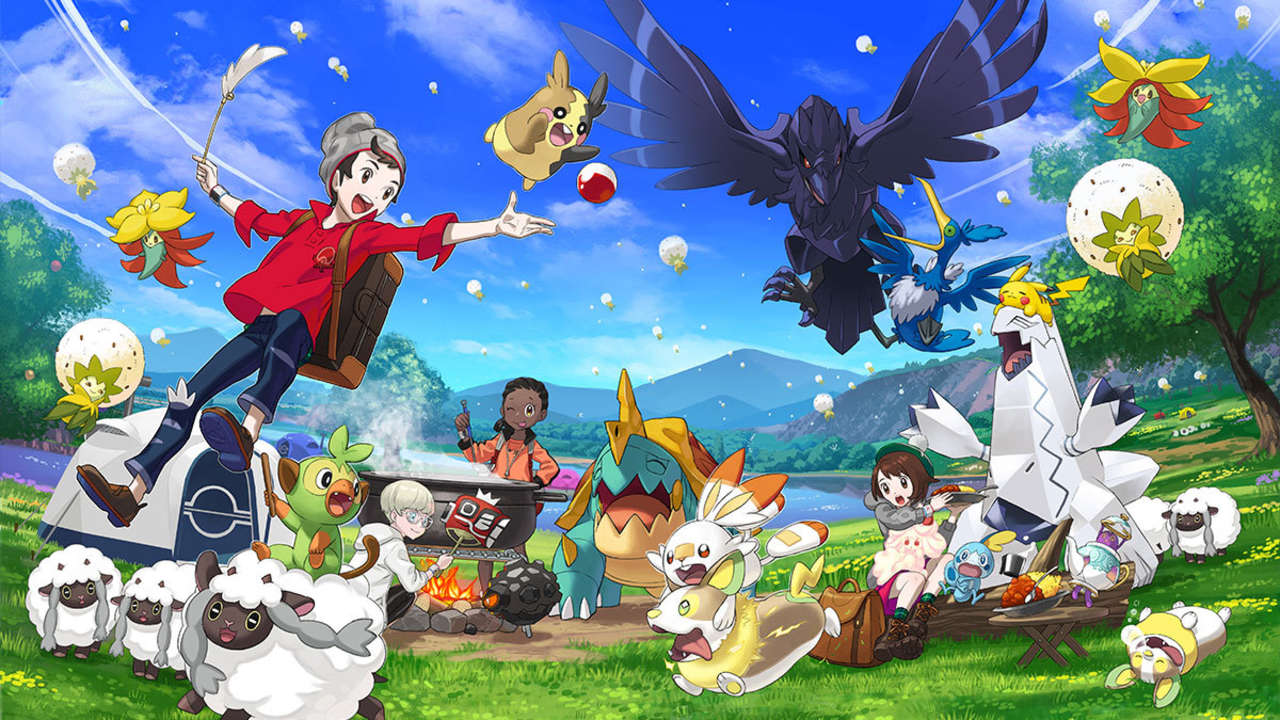
A new mainline Pokemon game usually has fans whipped up into a frenzy, but not like this! The announcement that the latest games would not allow some Pokemon to be transferred from older titles was the final straw for many who had a long list of grievances- such as progressively simpler maps, and easier difficulty. Since the cull was to help production in other areas, fans and gamers in general were curious what improvements would be made. Should you take up arms for Pokemon Sword and Pokemon Shield, or are they blunt and buckled?
Pokemon Sword & Pokemon Shield
Publisher: Nintendo
Developer: Game Freak
Platform: Nintendo Switch (Reviewed)
Release Date: November 15th
Players: 1 (Online Multiplayer)
Price: $59.99
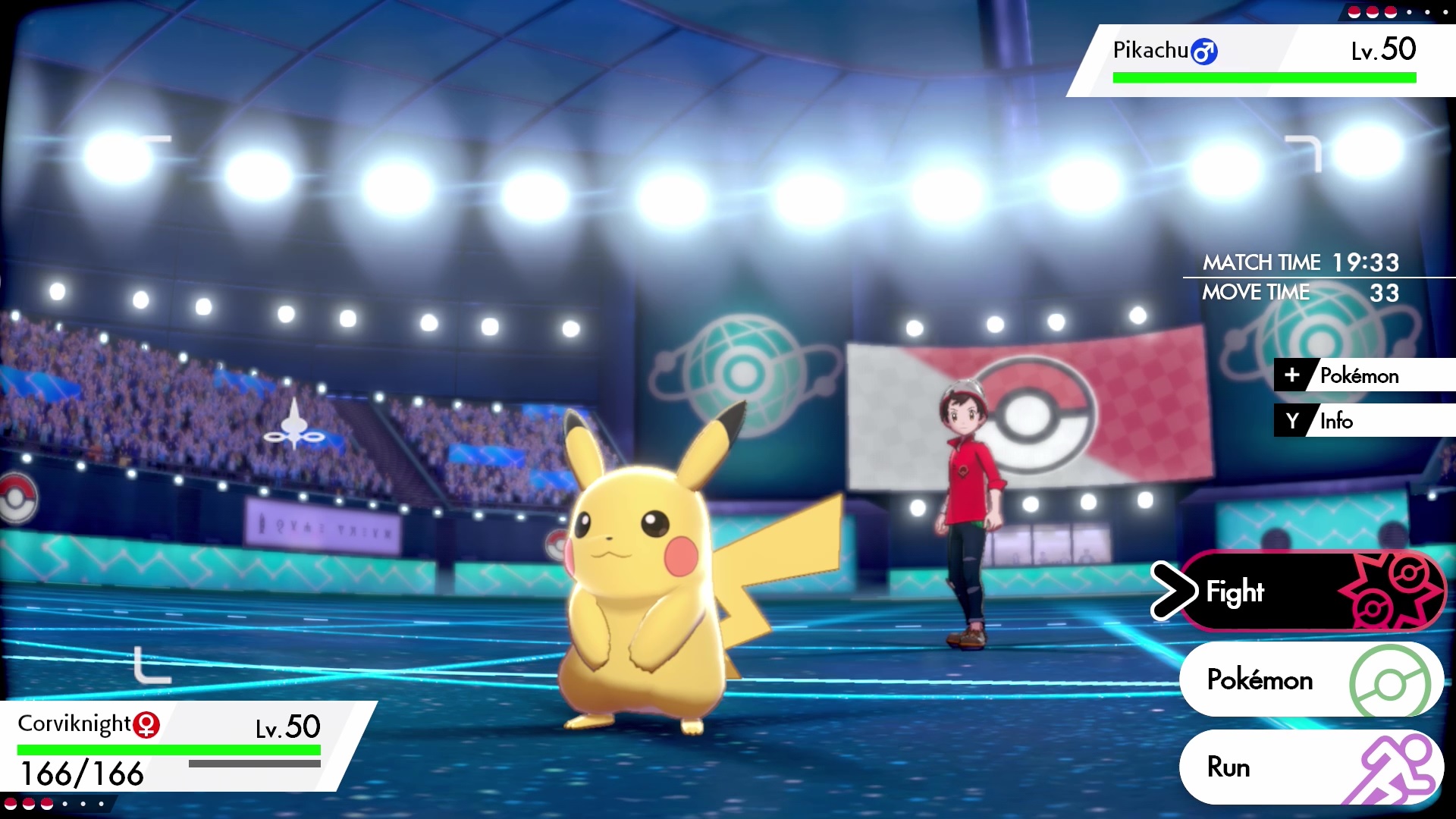
While past games had your character take up the challenge on a whim, the battle for the Pokemon Championship is akin to a major sporting event; complete with stadiums, broadcasts, and uniforms. Your goals are drilled in much more. In addition the plot utilizes many elements and themes from recent games, and it comes across as a less-effective retreading of the same ground.
That being said, the villains feels thrown in to check a box, instead of melding it into the plot. Despite hints towards their goals at various points, the game drags you out of the final battles to suddenly be a hero. It almost feels like any villain (or a real antagonist) with any motivation could have slotted in with little difference.
However, the Gym Leaders and other major characters are given more chance to shine. Along with sports trading cards providing more backstory on major characters, bosses will often comment on the battle, and what you just did (even down to specific moves).
The plot is a somewhat serviceable vehicle for the game, with some mildly amusing NPC dialogue, a rival you love to hate, and with battles against major bosses more engaging. Nothing is exceptional, with a black mark against the villains, and the return of overly-friendly NPCs making sure you know what is going on.
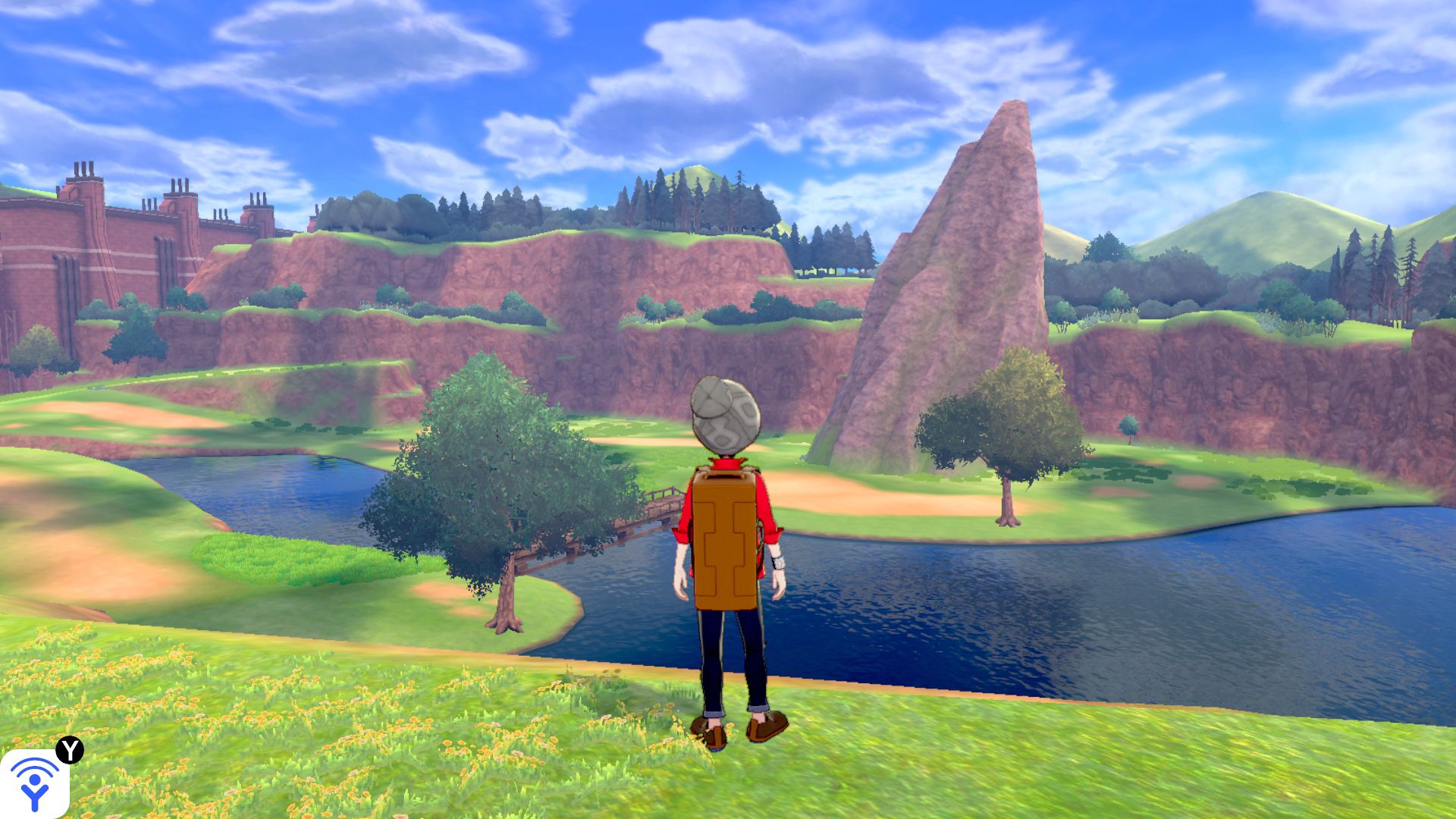
While the core gameplay remains unchanged, what is new this time around? The biggest change is how you encounter wild Pokemon and explore the world. Rather than a series of routes connecting towns and cities together, everything outside of civilization and dungeons is The Wild Area.
You have no restrictions on where you want to go; albeit high-level Pokemon are harder to run away from in a battle, dissuading wandering into extremely high-level areas. You will still get the odd NPC acting as a roadblock to dungeons until you get a badge or progress the plot. Wild Pokemon encounters have taken some pages from the Let’s Go games. While random Pokemon still hide in tall grass, they also freely roam out in the open. Most will chase after you, but some will flee.
It is surprisingly fun to try and work out what a Pokemon is through the tall grass, or hear a cry you do not recognize. Not to mention being chased down by wild Pokemon you may wish to avoid can bring a little tension. You can even encounter new Pokemon depending on the weather, which in turn can make catching it more challenging. For the first time, you feel like you are hunting down and discovering Pokemon.
You can also encounter the odd beast far above the level curve. They are usually more of a pest than a challenge, as even being even a few levels higher can curb-stomp a whole team and make escape nigh-impossible. Bear this in mind for later. Nonetheless, players can have an easier time to find the perfect wild Pokemon. Even if they do not, there are items and mechanics (many of them new) to change a Pokemon’s stat growths, and teach them egg-moves from another Pokemon (typically only passed onto an offspring via breeding).
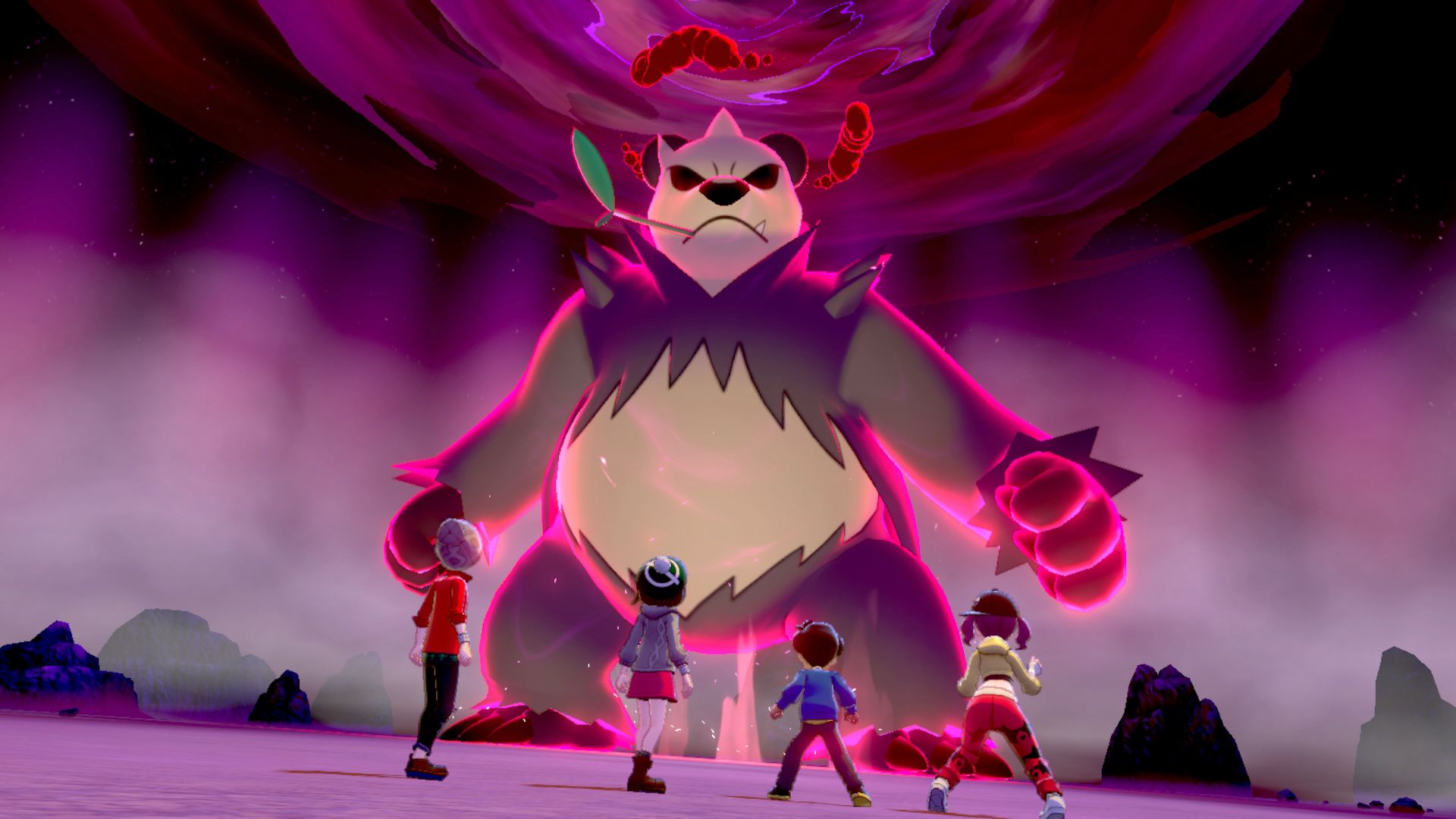
Rather than abandon the Pokemon from your adventure in favor of making a brand new “competitive” one for online, you can now modify them much more freely. The items are not too common either, and usually earned though being good at the game (Max Raid Battles and points earned at the Battle Tower).
Being able to take a risk and push ahead to catch a higher level Pokemon should have been a great. Should have been. Badges no longer just allow you to use higher level traded Pokemon- it allows you to catch higher level Pokemon. It only hinders the early game, with your fifth badge soon letting you catch Pokemon around end-game level. Even Max Raid battles and normal gameplay allow you to catch and quickly raise a high-level Pokemon anyway.
Leveling is incredibly easy, so you can raise your Pokemon’s level to above that the next boss’ strongest Pokemon. Along with your entire party getting a share of experience points (EXP) in each battle, nearly every mechanic grants you extra EXP; such as playing with or feeding your Pokemon, or even capturing wild Pokemon.
The EXP you earn is also based on the level difference between the opponent and your Pokemon. The higher they are, the more EXP you earn. So either your highest level Pokemon gets the biggest share of EXP (but less EXP overall), or your lower level Pokemon get more EXP and the rest of your party levels up quicker. It takes great strides to prevent over-leveling (using a selection of more than six Pokemon and depositing anything getting too strong). Otherwise, you always have absolute victory, as long as the type match-up is not against you.
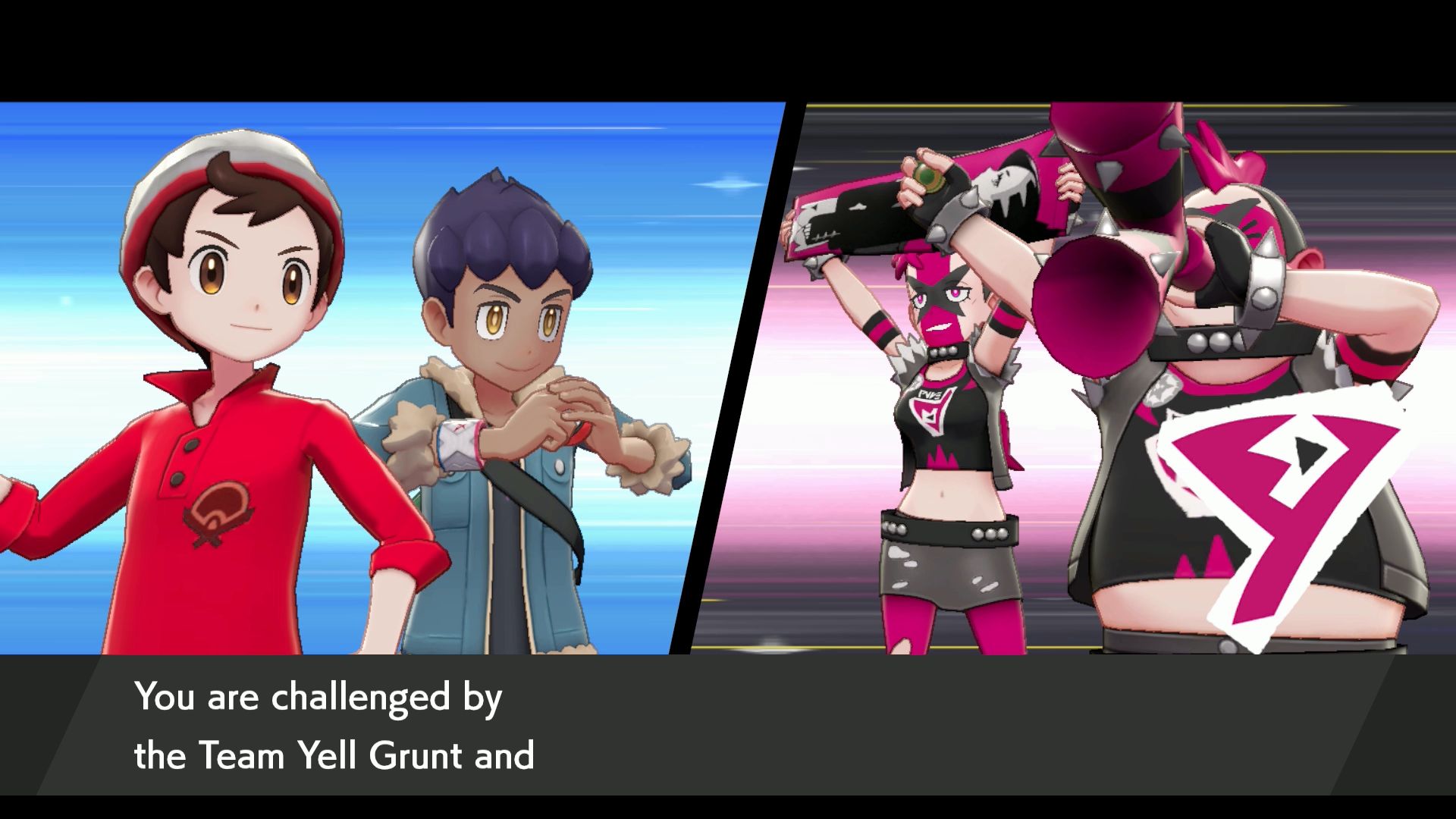
A lack of difficulty comes in other ways as well. The game’s tactics still feel “wide-but-shallow”. Despite moves, abilities, weather, special terrain, held items, and more all playing off each other- ultimately the best tactic is still to hit as hard and fast as possible, with secondary effects coming from abilities or moves that also deal damage.
Trainers never have Pokemon holding items or use stat-boosting items, with only bosses healing if they get the chance. It was only with Max Raid Battles and the Elite Four-equivalent that opposing Pokemon have variety in their moveset types, to counter types they were weak to.
In fact, by focusing on a few Pokemon (Fire and Fighting-Types have advantages against most bosses), they can become strong enough to beat the game in around 15 hours (skipping a lot of content). If you come across something you struggle against, you can quickly level-up something to take care of it. Though the latter means you can experiment more freely with party composition, and quickly bring new Pokemon up to speed.
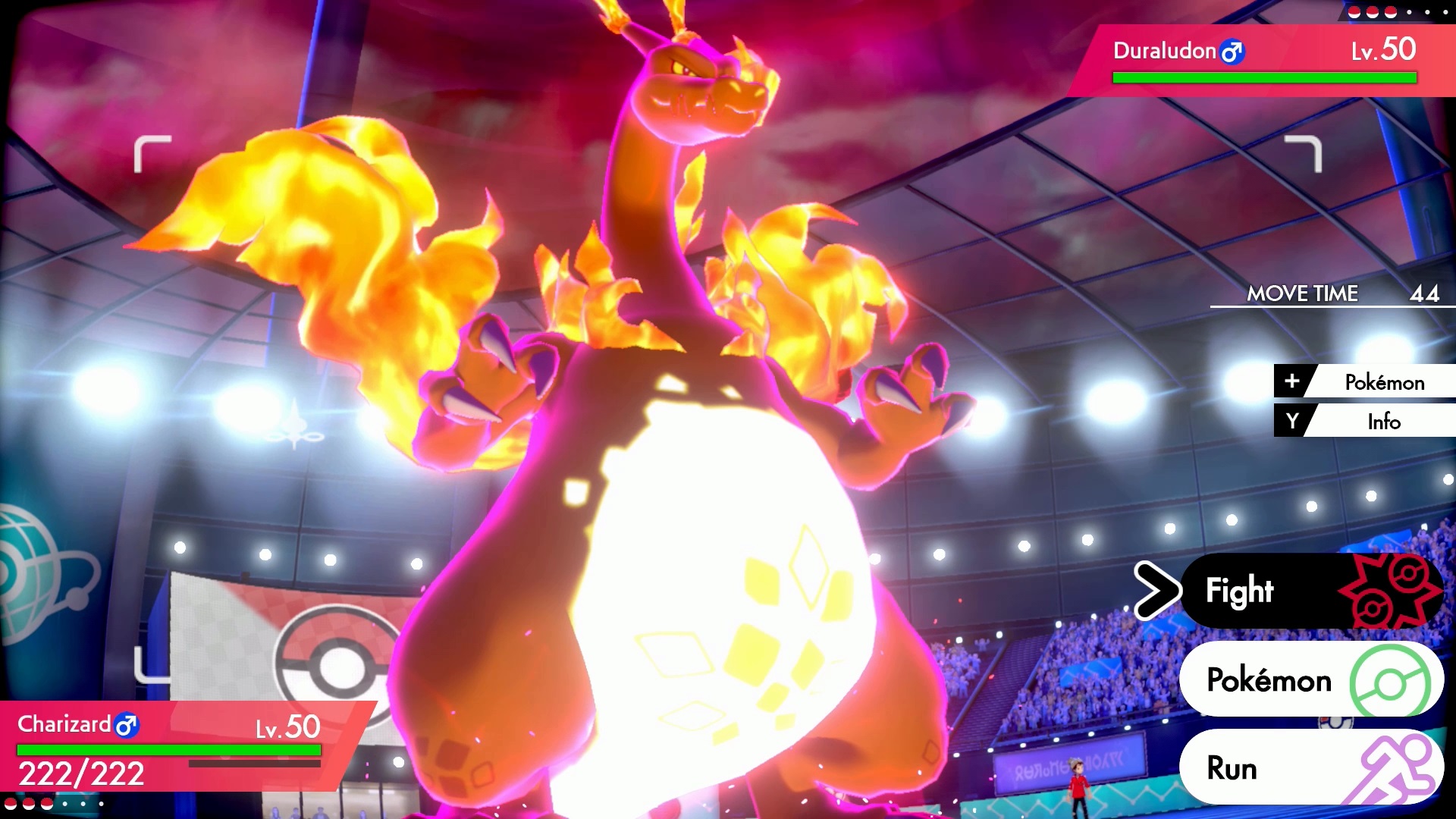
Dynamaxing bring the worst of Mega Evolutions and Z-Moves; even if it is only restricted to bosses, Max Raid battles, and online. While the Pokemon is limited to a giant form for three turns, they gain increased health, and all their moves become Max Moves. These are powerful and grant useful secondary effects. Thanks to this, Dynamaxing is a win-condition online and in some boss battles.
If you use it immediately, you can usually knock out two or three Pokemon while setting up to steamroll most of the remaining team. If you use it in response to your opponent’s Dynamaxing, you prevent some losses as both titans pummel each other. Bosses will predictably only Dynamax their last Pokemon on the first turn it comes out. Once you learn what each type of Max Move does, battles against or with Dynamax Pokemon become more predictable.
Online battles have only been out for a short time, but it seems the meta will still be hyper-aggressive with little variation in tactics and builds. Right now, there are a few recurring Pokemon, but nothing as bad as the same 12 Pokemon over and over like in previous games. It is still very early days however.
Nonetheless, when you consider how the online meta-game is shallow, and that the game is lacking any form of Global Trade System (meaning you will have to find people in real life to trade with, or bank on who you encounter randomly online); we cannot recommend buying a Nintendo Switch Online pass just for these games.
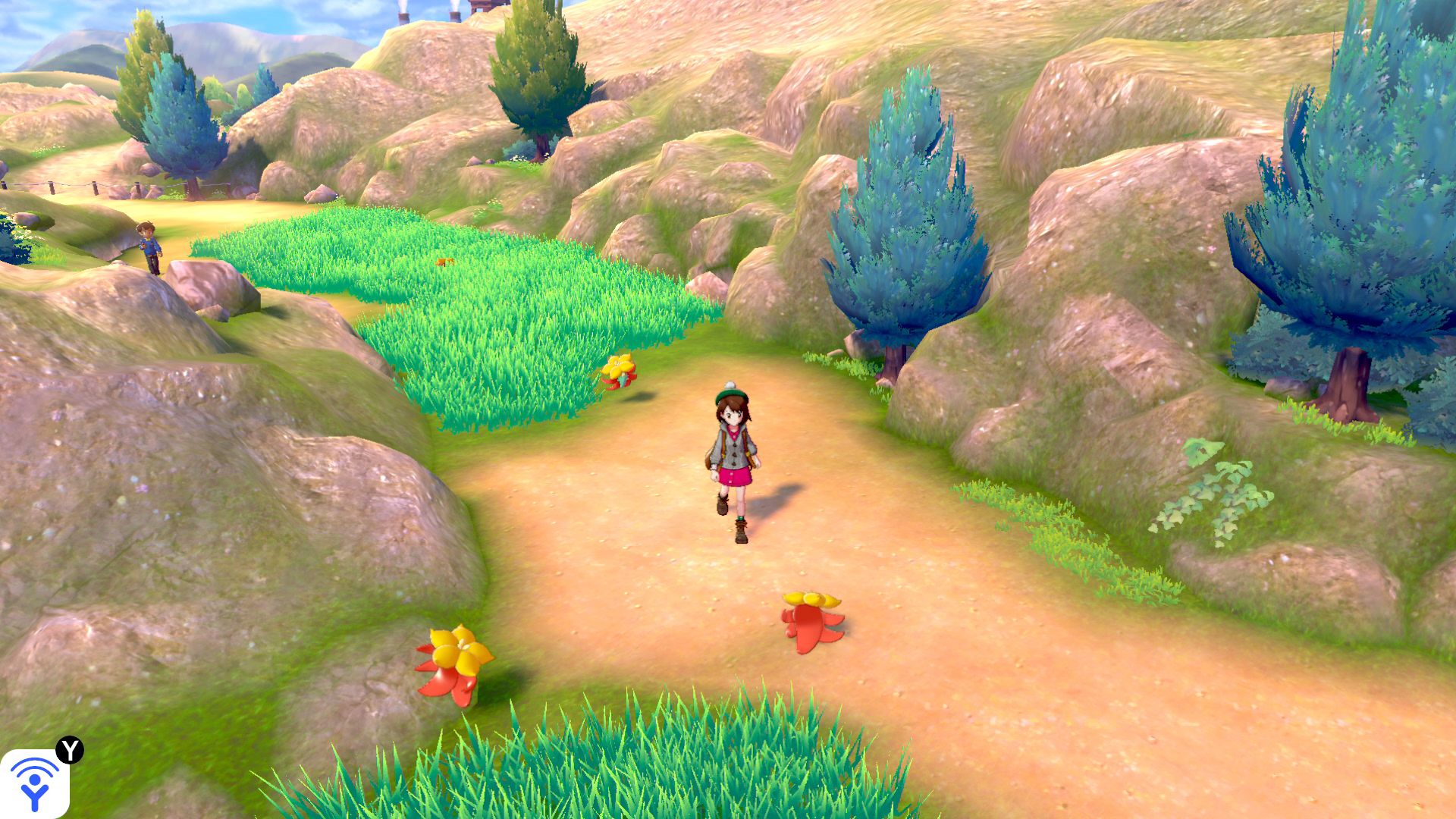
Along with EXP, you also seem to be drowning in money and free items. The Wild Area often has hidden items marked by a twinkling light. These, along with various NPCs willing to sell you high-value items for “Watts” (generated through interacting with Max Raid dens) result in an abundance of cash. In conjunction with NPCs willing to heal you far too often, and cooking curry while Camping healing your party, you can usually make sure your entire party is fully healed at all times.
Everything comes back to money, EXP, or items. Pokejobs has your boxed Pokemon being sent to perform a task in real-time in exchange for EXP and items. Playing with your Pokemon while Camping gives them a little EXP; but thanks to how it can be hard to focus on one Pokemon and incredibly tedious, its not worth doing despite the odd cute interaction.
The Watts you gain in the Wild Area let you buy one-use Technical Records to teach powerful moves, Max Raid battles reward you with those items along with EXP Candy (which you at least have to freedom to give to whoever you wish). It genuinely feels like you have to work hard to not make the game too easy, and skip half of the game’s features.
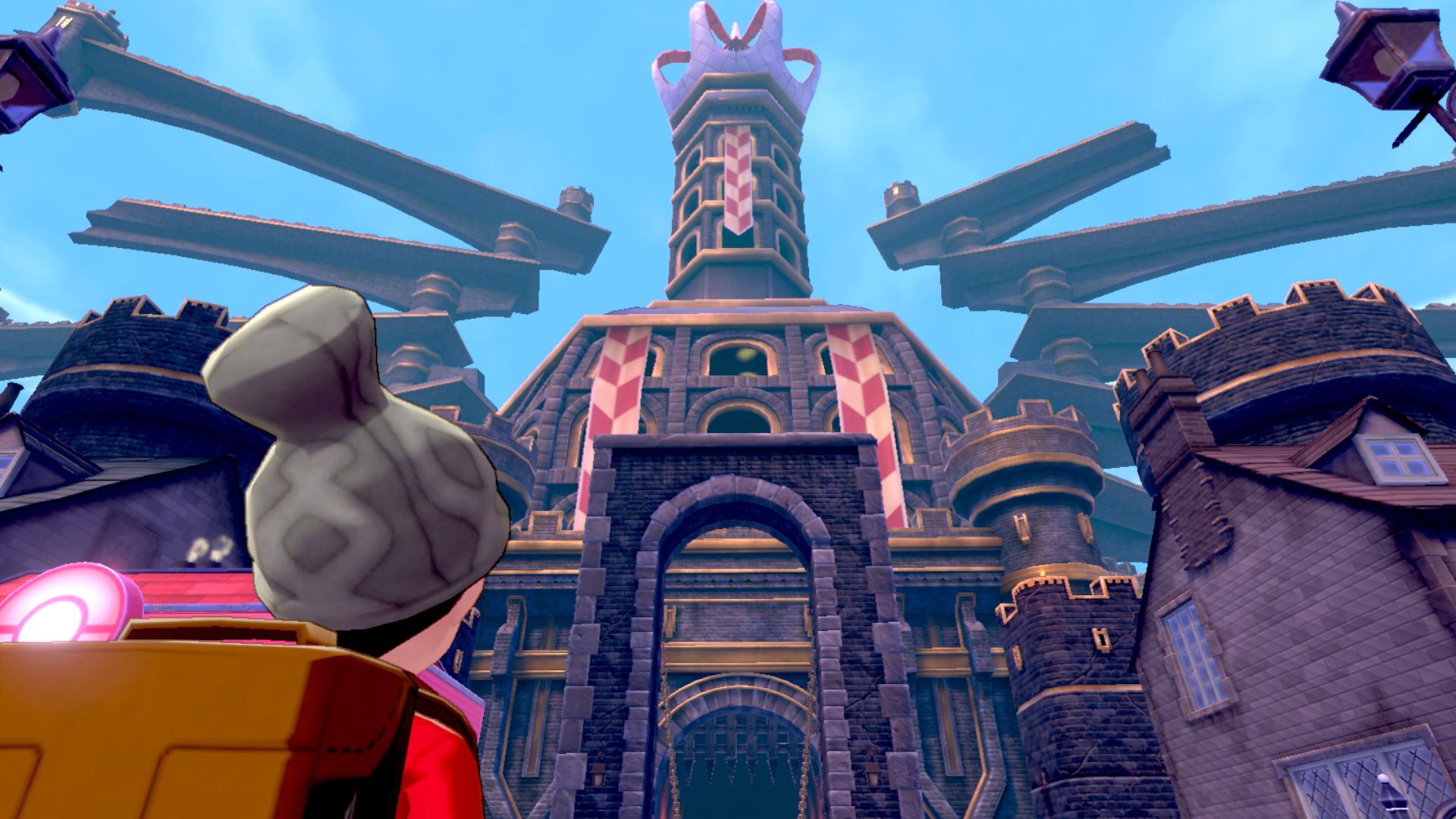
Puzzles in gyms also suffer from being rather easy. With basic switch and navigation puzzles, to (the rather unique) trying to catch a Pokemon while an NPC partner is trying to KO it, there is nothing you cannot beat. Gyms only having three or so trainers does not help either. This also passes over to dungeons. Even though paths though forests and caves do feel natural and organic, they are devoid of mazes or puzzles. The Wild Area (despite some well hidden items and some impressive landmarks) also lack nooks and crannies to make exploration fun.
Max Raid battles are one of the game’s highlights. Specific points on the map will allow you to fight nearly any wild Pokemon Dynamaxed with three others (online or NPCs). These battles give the giant Pokemon plenty of health, and several other unique skills- removing stat changes, or creating a barrier.
Some of the higher-tier battles can be rather challenging thanks to this, and because you lose in a set number of turns or if allied Pokemon faint a set number of times. Only excessive overleveling can make these fights into a joke, and type-advantage is not the be-all end-all as bosses pack more unique move-sets. These battles offer great ways to catch later Pokemon much earlier, and gain items to improve your Pokemon. You have a genuine reward for being good at the game.
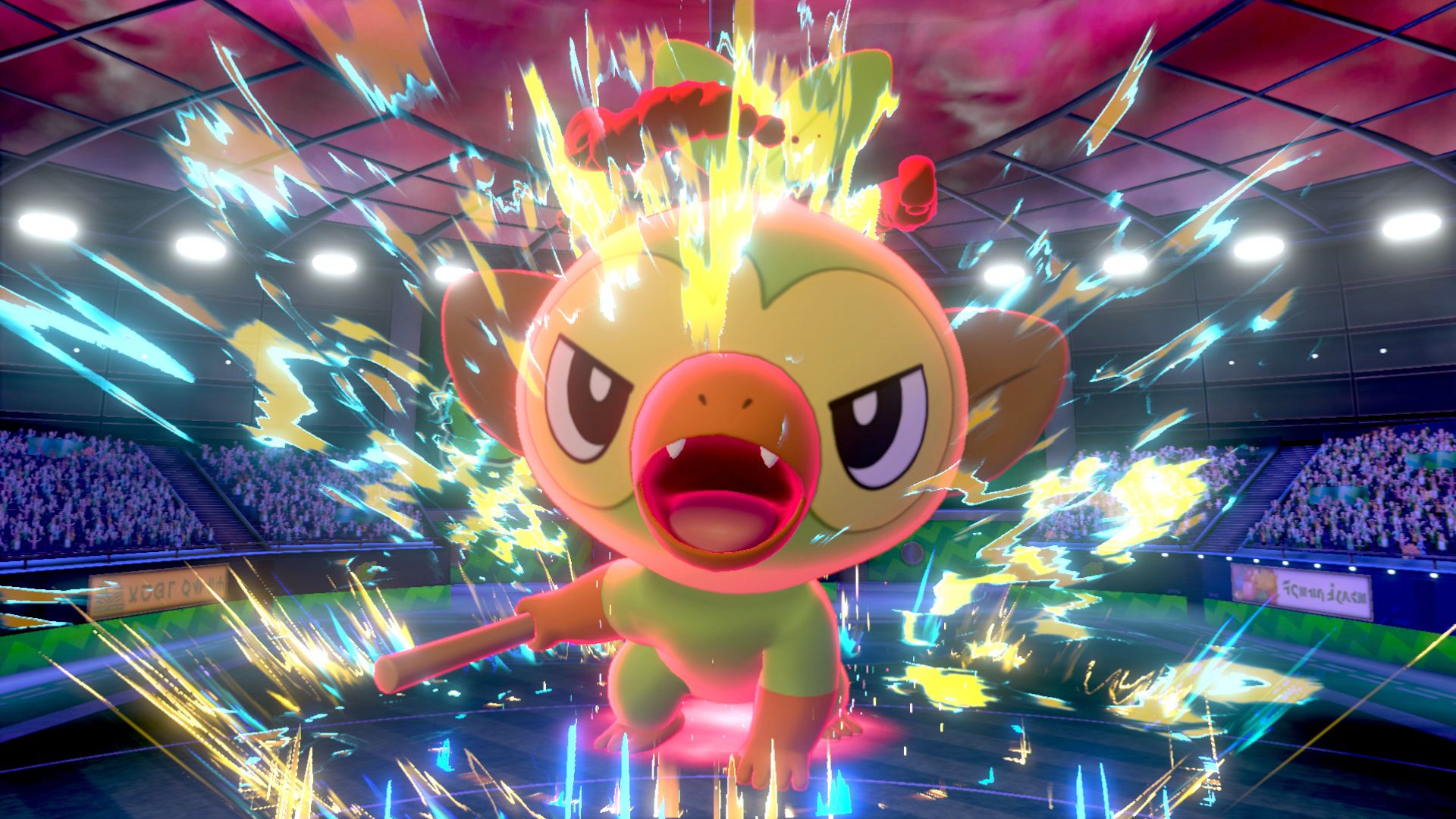
Now for the big question: Who made the cut? The total number of Pokemon in the game seems to be around 400. 80 of those are new Pokemon, including 13 Galarian variants on older Pokemon. This means around 470 Pokemon will not be entering Galar. The total number of new Pokemon and regional variants is not dissimilar to previous games.
Die-hard gamers are also keen to know about the post-game, and it is as lack-luster as other recent entries. A brief adventure of around three hours, and although the Battle Tower returns (an infinite gauntlet of genuinely challenging trainers to earn special points for items), those who miss the Battle Frontier will be left wanting.
While tracking down Pokemon in the Wild Area and Max Raid battles are a delight, you must take great strains to not over-level and completely flatten an already easy game until you go online or enter the Battle Tower. You will use more Pokemon than ever before, but nearly anything will do the job.

Many Pokemon were cut to allegedly improve various areas, including graphics and animation. Let us focus on the good first- Most towns, cities, and dungeons have a fantastic design.
They capture the spirit of rustic English villages, older cities with a mix of modern and older architecture, and a bustling metropolis of the 21st century. Even fantastical areas such as a hamlet among a forest glowing mushrooms, or a mine filled with glowing crystals all feels storybook-esque and fantastical.
Major characters are also distinctive. Even with the Gym Leaders all incorporating a soccer-uniform motif into their design, their personalities shine through. Bosses also tend to get a few special animations, bringing them to life. Even the player character emotes more during gameplay and cutscenes than previous titles, and cutscene animations are usually pretty good.
Design-wise the new Pokemon are also pleasing, especially new takes on old Pokemon with Galarian forms. That being said, a handful do look strange even for Pokemon- around 10 or so. Though personal taste may vary.
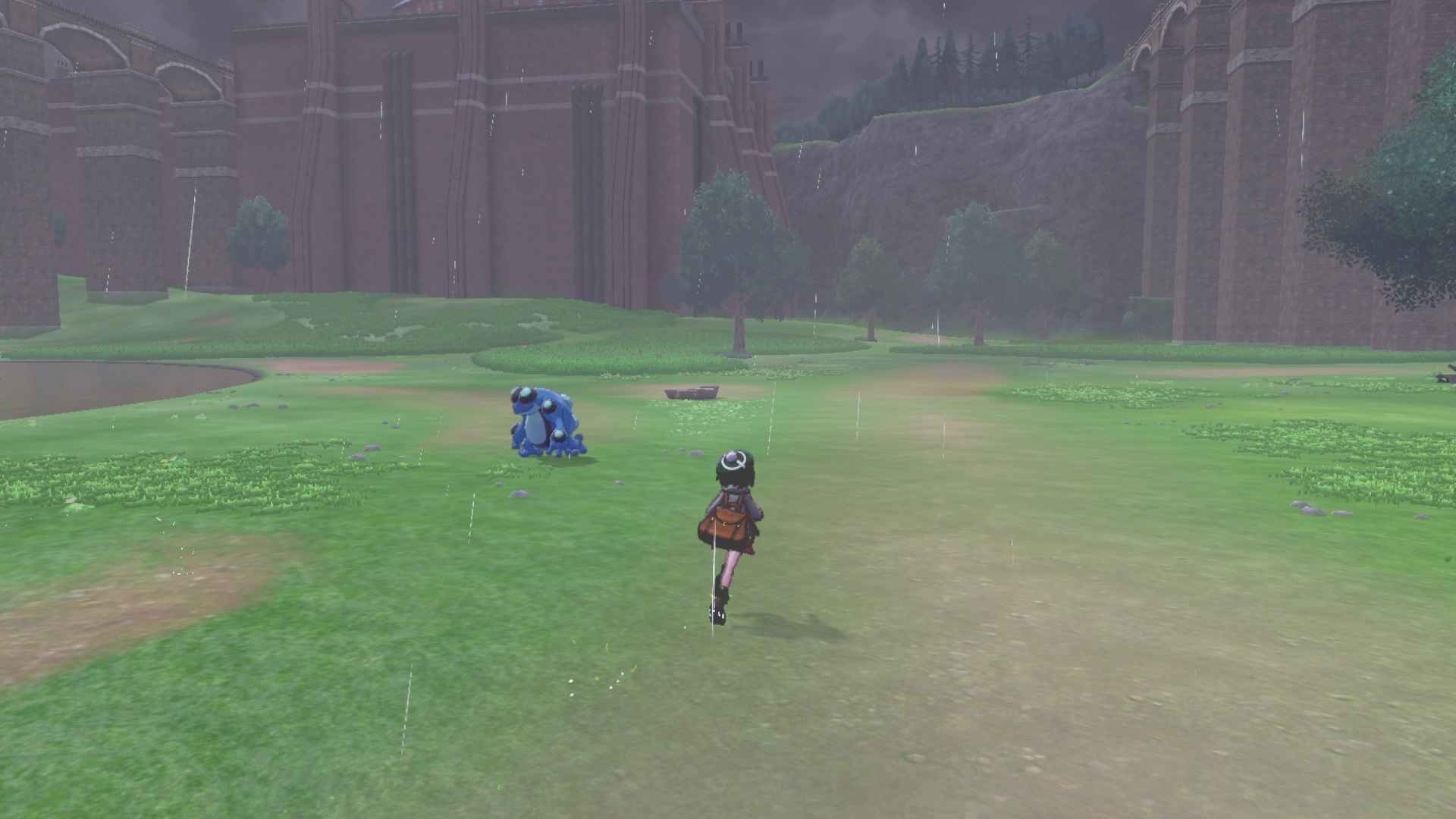
These factors are the diamonds in the rough. There is a distinctive lack of polish overall, and many smaller elements look like hold-overs from the 3DS. The “brand-new models” for Pokemon look identical to their 3DS counterparts, including their animations. Seeing a Pokemon still using a handful of animations to perform all moves looks cheap, and having stationary models slide around when they all have walking animations is embarrassing.
Pokemon perform their forward walking animation while rotating on the spot to turn. Trainers vanish as Pokemon execute moves. A Pokemon’s size is respected in the overworld, but in battle and in camp it is scaled down (resulting in trainer-sized Onix and Wailord). While past games had gyms filled with various kinds of trainers, here all Gym Trainers within a gym use the same design. It only draws attention to how every trainer of the same class looks the same.
Battle arenas usually look like the surrounding area, except in buildings where it is just a white void (or a colored void with a fancy floor in gyms), or in cities where it uses the surrounding Wild Area’s battle arena. NPCs freeze as you get on and off your bike or climb a ladder. One late-game cut-scene even utilizes static art instead of 3D models of characters looking out over a city. Frame-drops when there are lots of NPCs on screen at once despite running at 30 FPS. The list goes on.
We know the Switch is capable of far more, and we see no signs of the supposed graphical improvements- especially when it appears many models and animations were ported from older games. Some beautiful designs are held back by constant smaller graphical and performance issues.
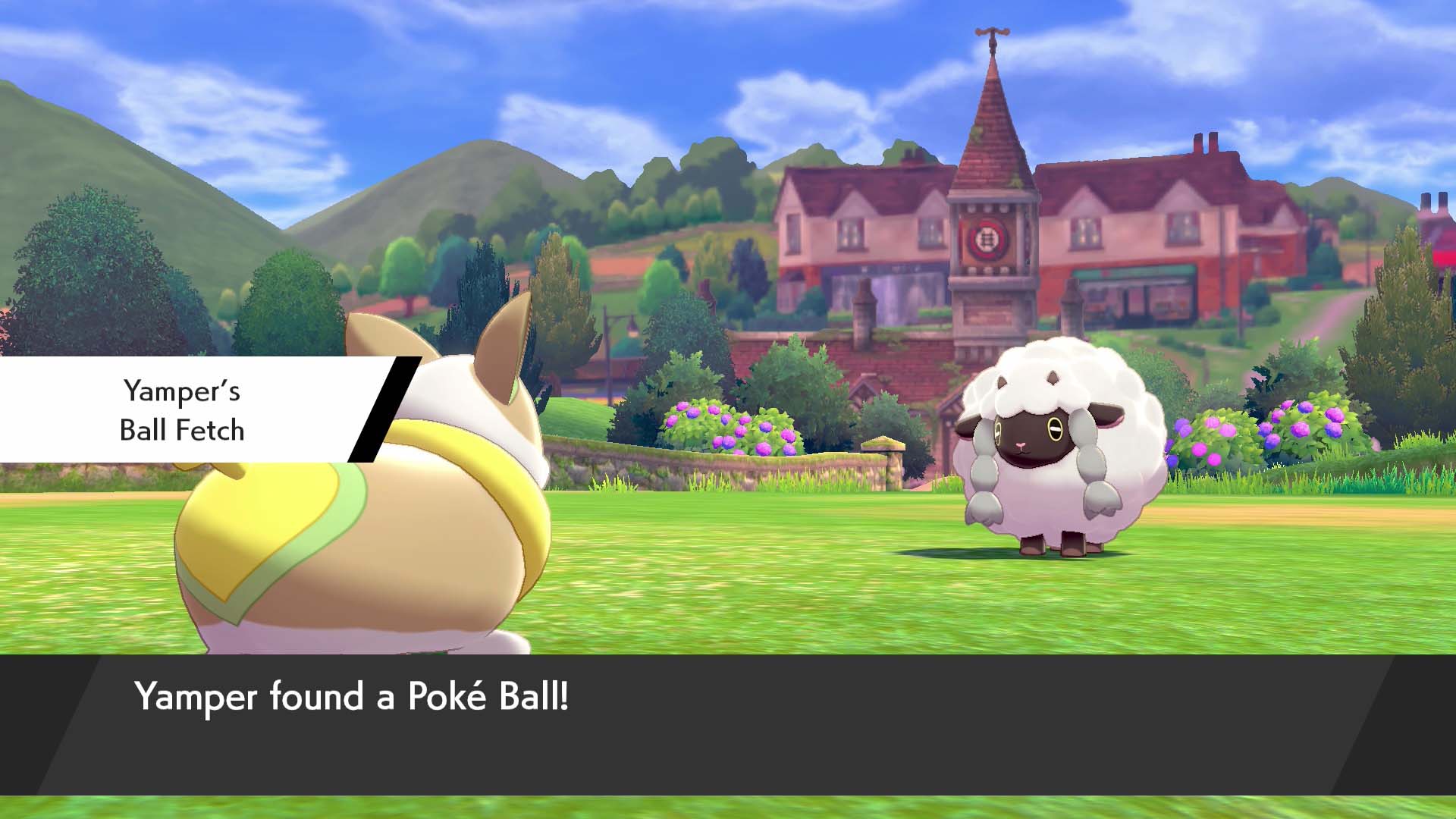
The music ranges from catchy battle songs to more sombre and soothing pieces in certain towns. An attempt is made at dynamic music in boss battles, when the last Pokemon is sent out. Though this is not always well hidden as the tracks switch, it does build excitement.
In the stadium-style Gym Battles, you can also hear the crowd cheer and react to what happens- shouting louder when a Pokemon has just taken a massive hit or fainted. It is a small touch, but it works wonders. The same applies to the use of the Pokemon theme as a leitmotif in various battles.
Foley sound effects are utilized more as well. You now hear a wings flapping, a trainer swiping the air in frustration after a loss, or a giant Pokemon’s thundering footsteps as it staggers after a hit. It has been a long time coming, but it sounds great.
There are some oddities. A few battles with no music are supposed to raise tension, only making you wonder if there is a bug. Some of the Pokemon cries now just sound like garbled noise, and obtaining an in-game item determines whether you can raise or lower sound levels. Sound-design and the soundtrack are satisfactory in spite of this.
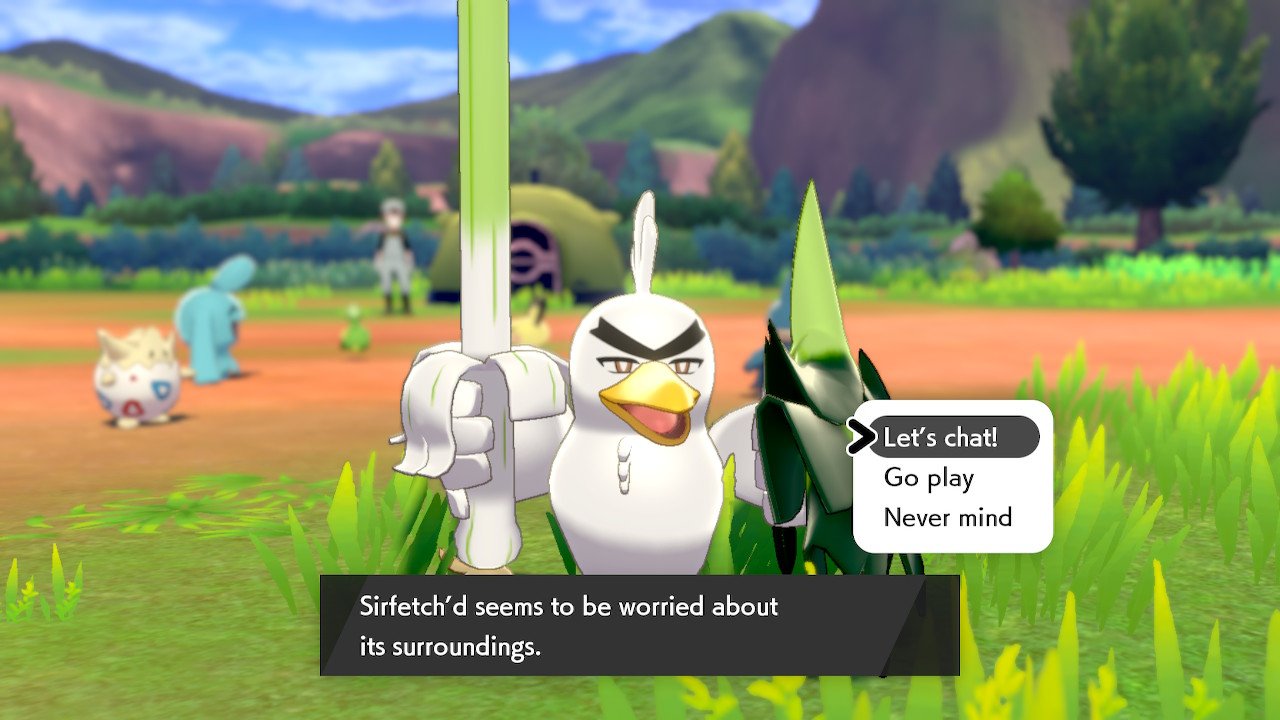
If Game Freak had stated a legitimate reason for cutting Pokemon, we would not be so harsh. But, they promised removal of a features would result in improvement in others. Whether you consider or ignore that, you then have to consider it launched with a bug that could corrupt your microSD card if you use the auto-save feature. “It doesn’t do any harm” is the lowest form of acceptance, and Game Freak could not manage that.
Making hunting Pokemon more fun, and making it easier to make them something competitively viable is great, but there is no major step-up from the last games, and new features just serve to make things even easier. You have to avoid doing most of what the game offers to make it a challenge, or use a large number of Pokemon on rotation.
It is not about the number of Pokemon, it is about a series that has evolved too slowly since its inception, and a failed promise of a great leap forward despite ample opportunity and potential budget- topped by a bug that harms other games on the system. Older fans are catered to in tournaments and events, making it hard to claim it is “just a kid’s game.” Even as a kid’s game, one giant leap for Pokemon is one small step to the industry standard.
Pokemon Sword and Pokemon Shield was reviewed on a Nintendo Switch using a review copy purchased by Niche Gamer. You can find additional information about Niche Gamer’s review/ethics policy here.